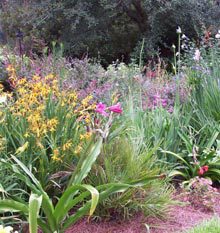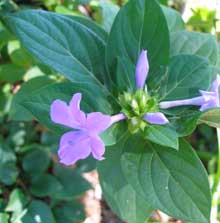 Our master gardener says now’s the time to get started…
Our master gardener says now’s the time to get started…
Can’t you still hear your mother reminding you to make your bed? I can; it is one of those things that rattles around in my brain in the morning. But since this is a garden column, we are not talking about a bed we dress every day; the making a garden bed is more of a creation – a new beginning. We will be building the soil in preparation for our veggies and flowers.
This is a good time of year to prepare your soil for the coming season. The fluctuating temperatures and abundant rainfall in winter work with you to create the perfect foundation for spring planting.
Are you starting a new bed this year? If you are, be sure to check for any underground utility lines. With one phone call to 811, a minimum of 72 hours before you dig, the lines for all utility companies in the area will be marked. This is a free service, and to paraphrase my mother again, “better safe than sorry.”
Once you are satisfied with the size and shape of the bed, you can go about making that bed. Be sure to actually measure the bed so you will have the total number of square feet. This information is helpful when you go to incorporate lime and fertilizers.
In the past it was the norm to dig the soil out and amend it with materials like compost or peat moss, lime and fertilizers and till the soil until it was well mixed. This backbreaking method still holds true, but current research suggests a new and different approach that works well for homeowners. An easier plan is to actually build up new soil on top of the ground. This works especially well if you are dealing with heavy, clay-like soils that are difficult to dig.
This method is called Lasagna Gardening. This simply involves layering materials on top of the soil. Given time and moisture these materials will break down and become soil. The different material used to make new garden beds by this method would be wet newspapers, leaves, grass clippings, well aged manures, mushroom or home-made compost. If you have never made your own compost, the Clemson Home and Garden Information Center has easy instructions on their website: http://www.clemson.edu/extension/hgic/plants/other/compost_mulch/hgic1600.html
You do not need to use any herbicide on any existing grass or weeds. You start with newspapers that have been soaked overnight. An inch or two is not too much, so start saving your papers. Newsprint is soy based these days and will not harm your soil, although I would stay away from the shiny magazine and advertising inserts. This layer of wet papers will smother any grass and will be your base layer. After applying the papers, start layering other compostable materials like the leaves and manures, just like you would when making lasagna. You can sporadically add more wet newspapers also; they are like the lasagna noodles. There is no set rule about which layer comes next. Mix it up and add to it as you find more materials, like grass clippings, as they become available. It won’t hurt to ask you neighbors to save their leaves, grass clippings and newspapers for you. If you run your lawnmower over dry leaves, it will break them up so they will break down more quickly.
Patricia Lanza, in her book “Lasagna Gardening,” starts planting immediately by just digging a small hole and sticking the plant in. I have tried this and it works, but I generally prefer to wait a few weeks to let the materials meld into a rich dark earth. You can build these layers up as high as you wish; they are going to settle by more than half as they break down. You are going to want to water this bed well when you first make it and keep it moist until it starts breaking down. After a while, you will notice this soil holds moisture well and less watering is needed.
The initial layer of newspapers will start to break down and the new soil will become one with the old. This new material will attract the beneficials like earthworms and the good microbes, both of which will provide needed, and free, nutrition to your plants.
If you are just re-vitalizing an existing garden bed, some of the same principles hold. You will want to re-evaluate your plant material and remove whatever did not perform well for you, or just transplant things that might look better in a different environment. After cleaning out the bed, you can add a thin layer of newspapers to the open areas, they do not need to be wet, 5 or 6 sheets will be plenty. Then it is time to spread some compost over top and mulch well. The newspapers will help to keep the weed seeds from germinating. Always refresh the mulch when adding new plantings.
It is a great time of year; we always have those surprisingly mild days, perfect for working outside, and there are fewer bugs to contend with. The work you do now will provide the foundation for healthy plants. So dream away and envision your garden in spring, but now is the time to get up and at ‘em and make your bed.





